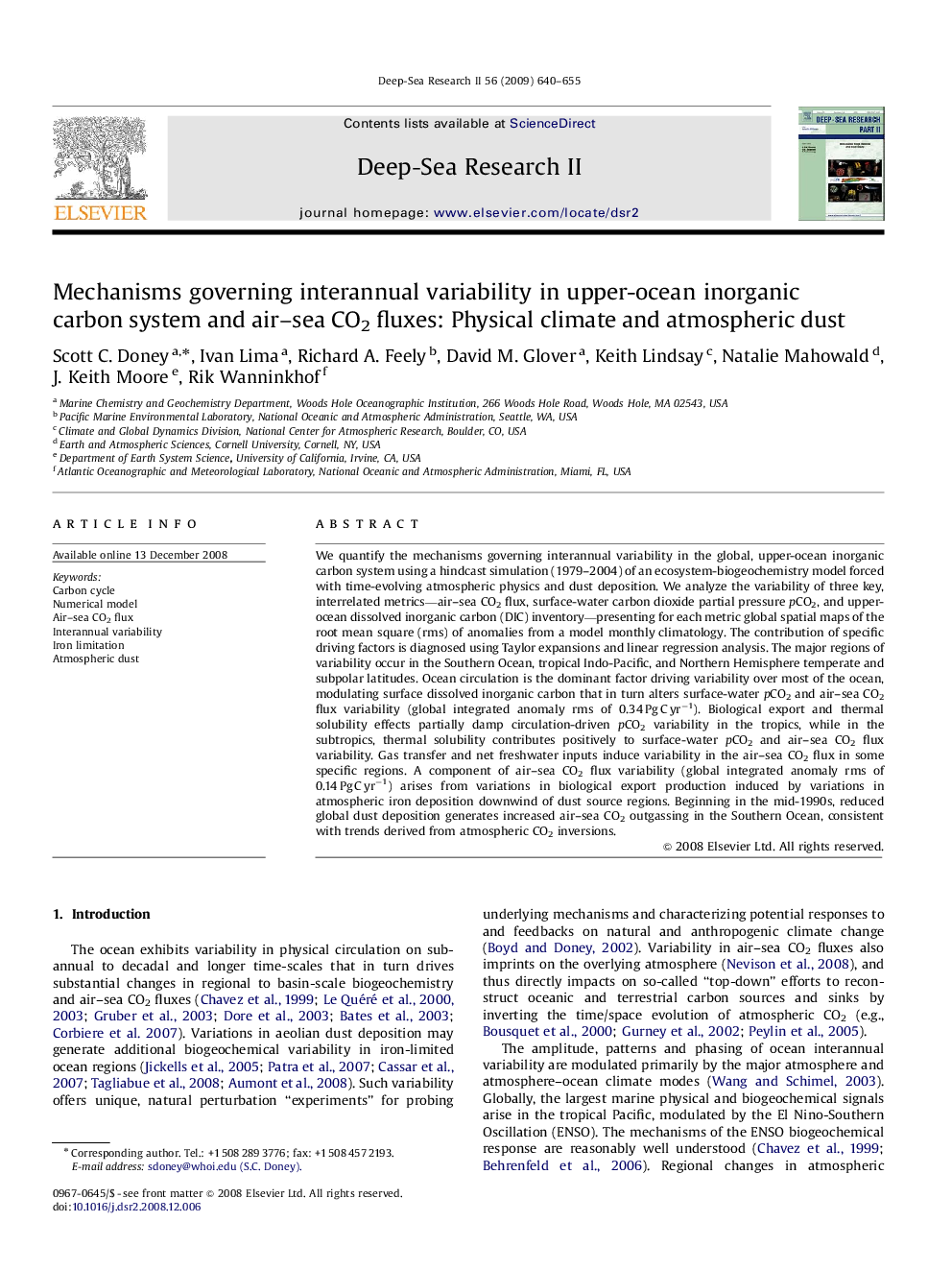| کد مقاله | کد نشریه | سال انتشار | مقاله انگلیسی | نسخه تمام متن |
|---|---|---|---|---|
| 4537778 | 1626485 | 2009 | 16 صفحه PDF | دانلود رایگان |

We quantify the mechanisms governing interannual variability in the global, upper-ocean inorganic carbon system using a hindcast simulation (1979–2004) of an ecosystem-biogeochemistry model forced with time-evolving atmospheric physics and dust deposition. We analyze the variability of three key, interrelated metrics—air–sea CO2 flux, surface-water carbon dioxide partial pressure pCO2, and upper-ocean dissolved inorganic carbon (DIC) inventory—presenting for each metric global spatial maps of the root mean square (rms) of anomalies from a model monthly climatology. The contribution of specific driving factors is diagnosed using Taylor expansions and linear regression analysis. The major regions of variability occur in the Southern Ocean, tropical Indo-Pacific, and Northern Hemisphere temperate and subpolar latitudes. Ocean circulation is the dominant factor driving variability over most of the ocean, modulating surface dissolved inorganic carbon that in turn alters surface-water pCO2 and air–sea CO2 flux variability (global integrated anomaly rms of 0.34 Pg C yr−1). Biological export and thermal solubility effects partially damp circulation-driven pCO2 variability in the tropics, while in the subtropics, thermal solubility contributes positively to surface-water pCO2 and air–sea CO2 flux variability. Gas transfer and net freshwater inputs induce variability in the air–sea CO2 flux in some specific regions. A component of air–sea CO2 flux variability (global integrated anomaly rms of 0.14 Pg C yr−1) arises from variations in biological export production induced by variations in atmospheric iron deposition downwind of dust source regions. Beginning in the mid-1990s, reduced global dust deposition generates increased air–sea CO2 outgassing in the Southern Ocean, consistent with trends derived from atmospheric CO2 inversions.
Journal: Deep Sea Research Part II: Topical Studies in Oceanography - Volume 56, Issues 8–10, April 2009, Pages 640–655